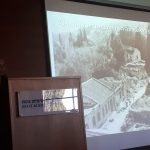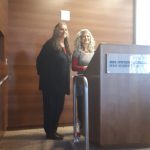An article describling an unknown chapter of the Sixties in Israel (some 10,000 words, in Hebrew).
The article is part of a special issue of Horizons in Geography (edited by Anat Kidron) that was dedicated to the “Functional Places and Collective Memory” (how functional sites – such as a road signs, sports stadium or film theatre – are designed as to construct a collective memory and conciousness).
Horizons in Geography is a journal published by the University of Haifa.
See below links for a lecture on a similar subject as well as a research article on another site, that was also included in the same special issue.
Abstract
This article examines the source of Rosh-Pina’s spiritual-alternative image and relays the history of the first hippie colony in Israel and its picturesque upper street, from the 1960s onwards. Up a steep cobblestone road, between deserted houses, old orchards and flowing spring water, dwells an unvisited chapter in history of the local-Israeli adoption of counterculture within a sort of “bubble” outside of Israeli time and space, on the eve of the Six-Day War in 1967.
The study emphasizes the functional infrastructure appropriated by hippie settlers, as well as the advantage they found in the absence of other infrastructures, and which enabled their unique way of life. This historic tale is presented in three acts: the first wave, during which the old Rosh-Pina was settled with individuals who invaded its houses in the spirit of hippie squatting; the second wave, during which the expanding community’s artistic and spiritual activity was established and deepened; and the third wave, in which the site became a tourist attraction branded as a Zionist narrative, silencing the alternative hippie episode. The colony elders’ joy at the revival of abandoned buildings soon turned to hostility, as this renewal thrived beyond expectations. A struggle of consciousness then slowly developed around the symbolism of the Upper Street, unbeknownst to most visitors to the restoration site colony at Rosh-Pina.
Authors
Marianna Ruah-Midbar Shapiro
Tal Elohev
Links
For the (Hebrew) editorial, by Anat Kidron, describing the current article among others click here.
For the issue’s cover and editorial page click here.
For the issue’s page at the journal’s site click here.
The Facebook page of the exhibition “Dreams at the Upper Street” is here.
Year
2019
Language
Hebrew
Academic/Non-Academic
Academic
Publisher/Source
Horizons in Geography (“Ofaqim b’Geographia”)
Bibliographical citation
Ruah-Midbar Shapiro, Marianna, and Tal Elohev, “The Hippie Colony of Old Rosh-Pina – The Appropriation and Design of Buildings and Scenic Elements for the Creation of a Spiritual-Alternative Milieu”, in Horizons in Geography 97 (2019): 107-135. [Hebrew]









